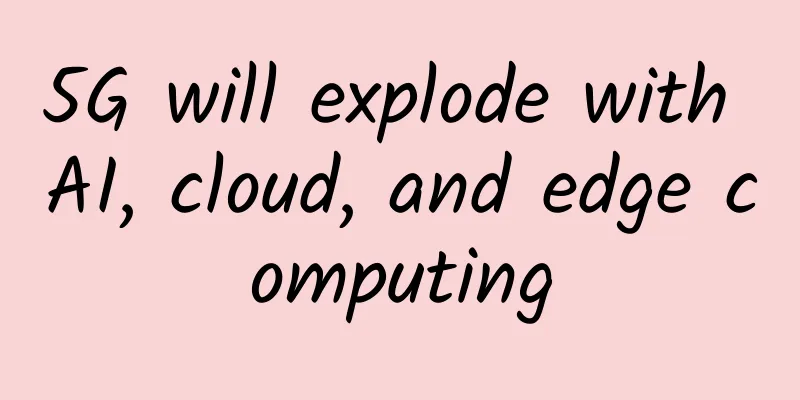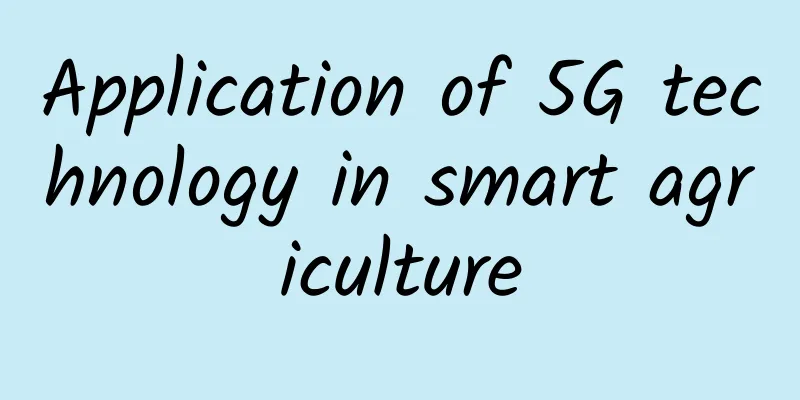5G will explode with AI, cloud, and edge computing

|
The 5G era has arrived, and all walks of life are gearing up for future development. Recently, OPPO and the world-renowned market research organization IHS Markit jointly released the first white paper on the interconnection of all things at the Future Technology Conference 2019 (OPPO INNO DAY) - "Intelligent Interconnection: Unleashing Opportunities with 5G, Artificial Intelligence and Cloud Technology". The report points out that in China, 5G and its applications are about to usher in a large-scale explosion. The new opportunities in the 5G era will be the intelligent integration of AI, cloud, edge computing and IoT. The new ecosystem of intelligent integration will be able to bring broader market and industry opportunities.
5G is entering our lives at an unimaginable speed. According to the white paper, 2019 has witnessed the first wave of standard-based 5G commercial launches. As of October 2019, 50 operators have launched 3GPP-compliant 5G commercial services in 27 countries. In addition, 328 operators in 109 countries are investing in 5G. The white paper also analyzes the current status of 5G deployment in various countries around the world. Among them, China and South Korea have deployed more than 10,000 5G NR/gNB (base stations) on a large scale. In Australia, the United Kingdom, Saudi Arabia, Switzerland, the United Arab Emirates and the United States, there have been hundreds of small-scale tactical deployments of 5G NR/gNB. In China, 5G and its applications are about to usher in a large-scale explosion. What makes 5G different from previous generations of cellular technology is that it was designed from the outset to address many different technical requirements, device form factors, applications and audiences. According to the white paper, with the development of artificial intelligence, cloud and edge, interconnection (including 5G) and the Internet of Things, they will achieve intelligent integration in the 5G era and truly bring value to enterprises and consumers. This value may mean reducing operating costs, obtaining new sources of income, or enhancing customer experience. Take artificial intelligence as an example. Artificial intelligence is still in its infancy: it has just entered the so-called "narrow" or "weak" artificial intelligence. With the application of 5G, edge computing and cloud computing will provide more solutions and support for artificial intelligence. Many practical applications and use cases will evolve into hybrid cloud-edge methods to achieve strong artificial intelligence. The white paper believes that when 5G, AI, cloud computing, and edge computing achieve intelligent integration, enterprises or organizations will need to have more complex business processing capabilities. At the same time, they need to be open and collaborate with partners to add new features to their respective solutions. In fact, the development of the 5G device ecosystem has become the main direction of development in various fields. According to the report, as of mid-November 2019, a total of 72 suppliers around the world announced the launch of 183 5G devices, including smartphones, indoor and outdoor CPE, robots, drones, etc. More than 40 of them have been put into commercial use. According to the white paper, about a quarter of the world's 1.7 billion mobile phones will have integrated 5G by 2023. Smartphones will increasingly have AI capabilities: IHS Markit predicts that by 2025, two-thirds of smartphones will have pre-installed AI hardware and features. Digital assistants in the form of smart speakers will also flourish, with the global installed base of smart speakers set to grow from more than 100 million this year to more than 800 million in three years. AI will also be increasingly integrated into consumer entertainment devices. For example, AI-enabled cameras, combined with smart TVs or streaming boxes, will use facial recognition to initiate personal viewing preferences and recommendations. At the gaming level, cloud gaming and VR/AR will also usher in new opportunities. Cloud gaming can significantly lower the hardware threshold for consumers, allowing them to enjoy high-quality games anytime, anywhere on smaller devices, and reduce latency, further promoting the comprehensive development of VR/AR games. The white paper states that as early as 2018, the global value of this market exceeded $100 billion. In addition, video surveillance, autonomous driving, and industrial automation all contain a large number of scenarios and opportunities for the interconnection of all things. At the same time, the white paper points out that despite the frequent emergence of new devices, smartphones will continue to play an important role in consumers' lives. Mobile phones are not only the most important terminal devices for consumers, but in the 5G era, mobile phones can also serve as gateways for wearable devices such as smart watches and health monitors, as controllers/receivers, and as data and video displays for other devices. As 5G develops, these evolving technologies will work together to create new immersive experiences for consumers, solve challenges and create opportunities for businesses and industries, and ultimately achieve intelligent integration. The world's top hardware Internet technology companies will have huge opportunities. |
<<: Why does TCP need a three-way handshake?
Recommend
Virtono saves 10 euros: Romania/UK/Dallas KVM annual payment starts from 4.95 euros
Virtono has launched a promotion where people can...
Multicast Protocol: The "Group Chat Master" of the Internet World
Fans who love to think, have you ever had these c...
What exactly is “split brain” in distributed systems?
[[413929]] This article is reprinted from the WeC...
Why is there no movement in China for the popular wireless mesh network?
The wireless mesh network that emerged in the sec...
Common social engineering methods for cracking WPA2 passwords and preventive measures
1. Introduction What is social engineering? Socia...
What’s next after the first 5G standard is released?
On June 14, Beijing time, the International Mobil...
OpLink: Houston 1Gbps unlimited traffic high-security VPS starting at $1 for the first month
Tribe has shared information about OpLink twice i...
Wu Hequan, Academician of the Chinese Academy of Engineering: 5G new infrastructure faces five major challenges
At the "5G and Network Development Strategy ...
2019 China Urban Renewal Promotion Award: The gains and changes of World Union Space
As China's major cities gradually enter the e...
Multi-process communication methods and a series of problems
[[434195]] This article is reprinted from the WeC...
Accelerating new infrastructure construction: Single-wavelength 200G backbone network is about to emerge, how far is 400G?
While the new infrastructure is accelerating the ...
China Mobile and Huawei jointly complete 5G voice full function testing
Recently, China Mobile and Huawei jointly complet...
Risks and opportunities in the 5G era
At the end of 2018, the 5G frequency allocation o...
IPv6 is coming, what should we do with SDN?
IPv6 has been called for so many years, and final...
Who is responsible for the rampant online black industry?
[[188973]] A set of data: According to the 38th &...









![[11.11] UFOVPS 30% off, top up 200 yuan and get 20 yuan, Japan/Hong Kong CN2 GIA/US high defense optional](/upload/images/67cabd2788c2b.webp)